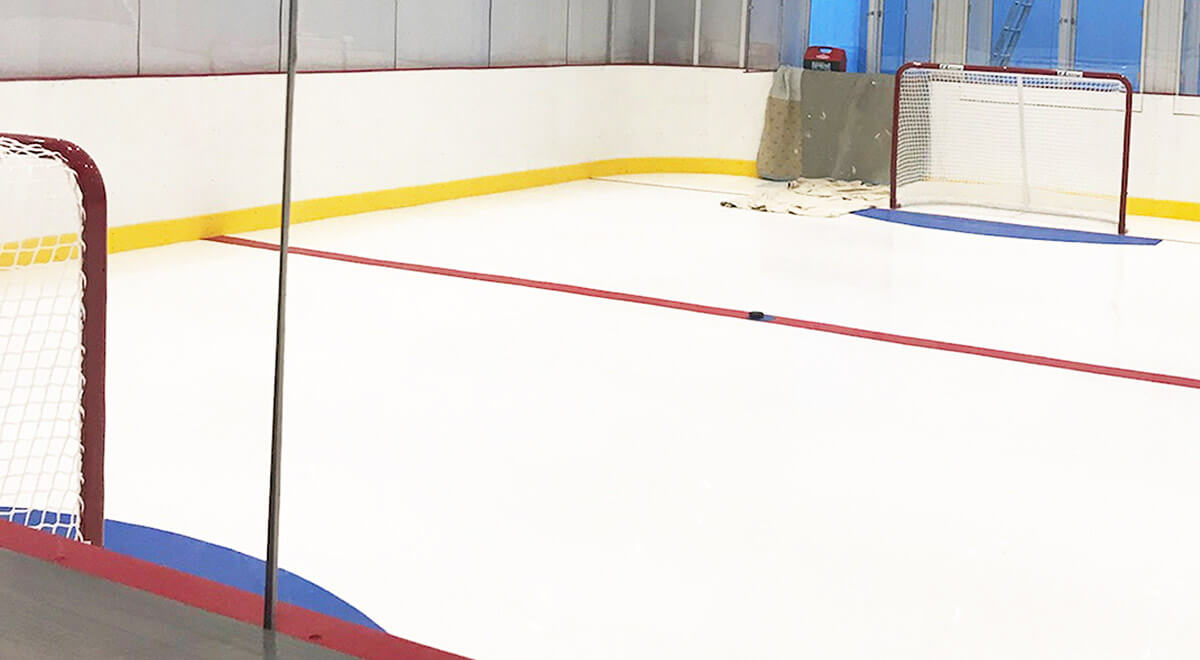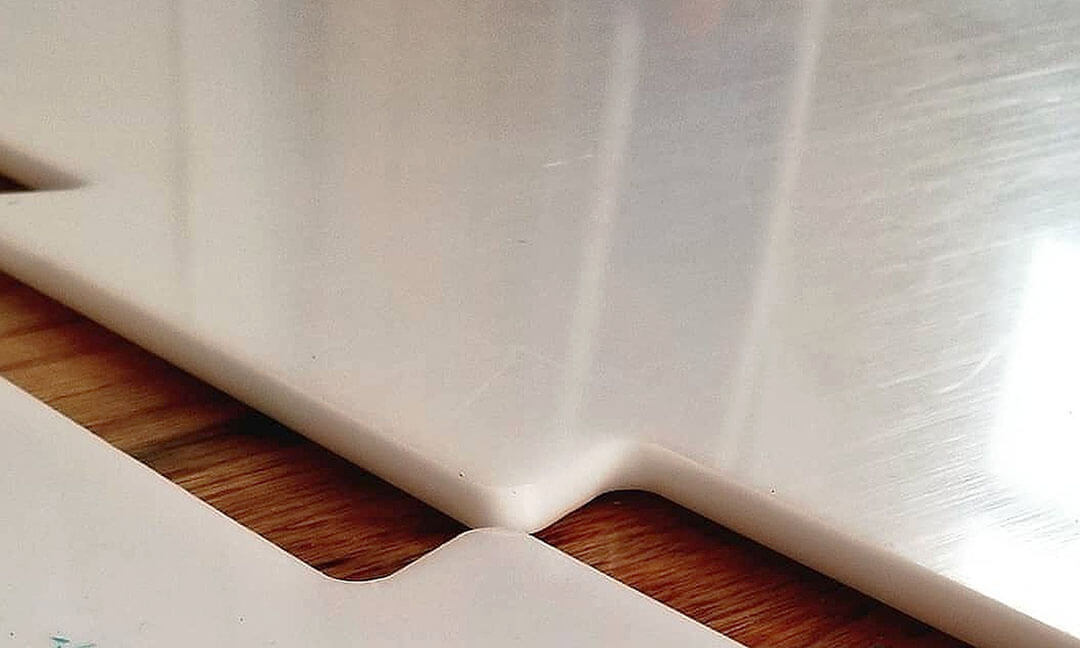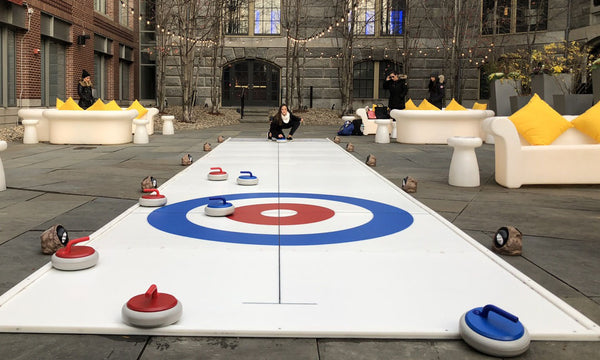Express Yourself with your own Home Rink
The need to express oneself starts from a very young age.
For figure skaters, having a home rink allows them to bring that expression to the ice.
From ages 3-6, kids are at their maximum curiosity and creativity.
This is usually the age when parents get their kids involved in extracurricular activities like art and sports.
Ice sports have been a go-to activity for kids as it helps them get the best of both worlds.
Some of the best ice skaters in the world started from a very young age.
For instance, 5-time World Champion and 2-time Olympic medalist Michelle Kwan started skating at 5 years old.
Just a few years later, she started taking it seriously.
The challenge with ice skating is consistent access to a rink.
Kids want to skate as often as possible but getting to rinks to practice routines can be difficult.
In this article, we will cover how kids can practice and express themselves at home with a synthetic ice home rink.
If you’re ready for your kids to start skating, read ahead.
Skating can start at almost any age with kids 10 and above picking up the sport too!
We’ll also mention young Kendal (photo above), a figure skater who found great joy practicing at home with synthetic ice tiles.
Types of Skating Drills
You’ll likely enroll your child in hockey, figure skating, or ice dancing.
Hockey and figure skating are the most popular disciplines.
Hockey is self-explanatory.
Kids work in team settings using their stick and skating skills to put the puck in the back of the net.
Figure skating, on the other hand, helps kids express themselves by learning twists, jumps, spins, and other freestyle moves.
Kids can also figure skate in pairs or groups, bringing another element of creativity into the mix.
Ice dancing is another way for kids to express themselves.
It’s highly influenced by ballroom dancing, with a couple performing similar moves on the ice.
Ice dancing may seem like paired figure skating but there are no overhead lifts and throws.
It’s all about dancing, choreography, and grace.
Whichever one you choose, there’s an opportunity for your child to learn fantastic moves and put them together with a coach either in a short or freestyle setting.
Kendal learned some of her favorite moves at a young age.
At 11, she now puts them together in routines to compete every year.

Developing Skating Routines
All ice skating disciplines have one thing in common.
Both require an iron-clad routine for success.
Figure skaters and Ice Dancers like Kendal work hard to develop their own routine outside of the physical commitments of getting all the jumps and moves down.
The power and energy of expression cannot be underestimated especially when trying to win over the judges during a competition.
The training along the way can be intense as most people do not clearly realize just how much work goes into these routines.
Some kids go as far as developing their own routines.
It’s fun to see their minds at work combining the moves they learned to their favorite piece of music.
With developing a routine, you add movies that flow well with the crescendos or changes to the beat.
On an ice rink, they can find a starting spot, then connect whatever moves they’ve learned to the music.
Ice dancing is a bit more structured, as they will follow the instructions of a coach while moving with a partner.
But that does not mean they can’t have some fun between their sessions, expressing themselves with some fun moves.
Expressing themselves or developing one routine on the ice is just the start.
If they want to get better and more competitive, they’re going to have to keep practicing.
Check out this video posted by Rebecca Duerrwaechter after her PolyGlide Ice Instagram win!
The Power Of Practice
The late Kobe Bryant would spend hours in the gym working on his shot.
He would get up before 5 am and practice at different intervals throughout the day, getting himself ready for game night.
On some nights, he was unstoppable.
His philosophy was that when everyone else was relaxing, he would be out working them, so no matter what they did in the gym, they would never catch up to him.
Many may consider Bryant an outlier, but it shows the power of practice.
The process made him better and better.
He was more confident on the court and willing to express himself and take risks.
Parents who encourage their children to practice will notice that their kids will soon look forward to it.
They will integrate it into their everyday lives.
They will be brave enough to express themselves through their art wherever they go.
It will even help them academically.
Young Kendal would practice her axles on the rink but she’ll also do them walking along a road in Shaker Village
https://www.instagram.com/p/CaCy5yOlQB2/
Practice breeds confidence!

How a Synthetic Ice Home Rink Can Help
One drawback with ice sports is the need to be at the ice to get some real reps in.
Now, the Ice Arena is no longer the only place where a skater can work on their creative talents while broadening their horizons and not wasting precious ice time in the process.
Skaters can now utilize their own home environment on as little as 32 square feet of space while wearing their skates......just like a batter warming up before heading to the plate!
Having that little extra time to get it right can sometimes help make the difference between taking home the trophy or not even placing.
So are you bringing 32 square feet of frozen ice into the home?
Of course, not (unless you find some way of doing that. If you do, let’s talk!).
What you can do is get 32 square feet of synthetic ice for your budding skater.
Synthetic ice is a special tile made of durable polyethylene.
It’s often infused with a special compound that allows skaters to use their actual metal blades to practice or skate for fun.
The tiles have grooves on each end that help them connect like puzzle pieces.
The result is a space where skaters like Kendal can get their reps in.
Synthetic ice has been around for decades, mainly for commercial rinks.
Now, products like our Starter Kits allow rinks to come home.
You can set them up in just a few minutes, connecting the 4 tiles with a soft mallet to form a 32 square foot space.
Once it’s ready, all your kids need to do it lace up those skates and they can take turns practicing their favorite moves.
Synthetic Ice Benefits
Synthetic ice is quickly becoming a go-to training tool for young skaters.
The more you use it, the more you find value in the product.
Some added benefits include:

Skate Anywhere You Find Space
Do you have 32 square feet of unused space lying around?
Then you have a home rink!
You can set it up almost anywhere that has a flat surface.
If there’s a spare room, garage, hallway, or driveway available, then you can have a rink.
Make sure the surface is level to have the best skating experience possible.
If the area is not level, set down some plywood first.
Scale It Up Or Down
If you have more space, why not scale it up!
A starter kit provides 32 square feet, but you can easily go to 64, 96, or more.
When you need to get back a bit of real estate, you can remove tiles as needed.
If the space and budget allow, your budding skater will be able to try more moves and have a more enjoyable skate.
Kid-Friendly Rink Time
A big drawback with rinks is that your young kids will be sharing them with older kids.
While it’s great to interact with older kids, some parents want a space that’s safe for their kids.
A home rink is a private space where they can practice without the risk of collisions.
Parents also save valuable time with scheduling and driving to the rink.
A Little Positive Resistance
An experienced skater will notice that synthetic does not quite feel like real ice.
That subtle difference is called the coefficient of friction.
Friction is necessary for skating.
On natural ice, the friction from the skates helps them glide on the thin film of water on the ice.
Since synthetic ice does not have this thin film of water, the friction will be a bit higher.
The best synthetic ice has about 10% more friction than natural ice.
This friction is not necessarily a terrible thing.
It helps skaters to be stronger and faster.
A similar comparison is athletes using resistance bands to help with explosiveness.
When your young skater gets on the ice to perform their routines, they will perform better.
Skate All Year
The more you skate, the better you get at skating.A common issue with ice skating is that it’s often considered a seasonal sport.
Unless you have access to a rink all year, most people skate during the winter.
A home rink means you can skate all year.
Kids can build the habit of practicing, giving them a significant advantage when it’s time to compete.

It Works For Hockey To!
You can use your home rink for different skating disciplines.
If you have a figure skater and a hockey player in the house, they can both use synthetic ice.
A hockey player can practice stick drills, shooting drills, or hockey stops.
In a world where the emphasis always seems to be "bigger is better" quite the opposite can be true when working on the mental aspect of preparing for an ice competition.
Skaters building their routines have already choreographed and timed their performance to music and can build on that using very little space as in their mind they can see it perfectly.
Being on skates only helps enhance the skaters experience and with the use of portable (infused) synthetic ice panels this is now a reality!
Tips For Training On Synthetic Ice
Chances are your young one would have a skating coach to teach the fundamentals of their sport.
The more they engage with their coach, the more they will learn.
If you have decided on a home rink, your child will be skating without a coach or access to a commercial rink.
For the best experience, you’ll need to take some extra steps:

Keep the Synthetic Ice Clean
The metal blades create small shavings at it cuts the synthetic ice panels.
These cuts aren’t a bad thing as it improves the performance of the tiles.
However, you must remove the shavings for a better skating experience.
Inspect the tiles for excess shavings before use.
Remove the shavings with a soft mop, broom, or microfiber cloth.
Resurface If Necessary
Ice can come in two forms: infused or non-infused.
Synthetic ice uses a special slip surface agent to help skaters achieve a smooth skate.
Infused products mean this agent is already baked into the product.
You just need to put on your skates and go!
Non-infused rinks on the other hand need a liquid conditioner applied before use.
For both non-infused and infused rinks, have your child do a test skate.
If it is difficult to skate, then you’ll need to reapply the conditioner.
Mix the conditioner with water and lightly mist it on the tiles with a spray bottle.
Set-Up Your Rink In Different Shapes
Synthetic ice is versatile, even with 32 square foot tiles.
You can arrange the tiles in different shapes for different training purposes.
For instance, you would want a square rink for practicing spins and twists.
But you can also arrange the tiles in a line to work on speed drills.
Alternate between different shapes to get more out of each session.
Don’t Forget To Stretch
Stretching may feel unnecessary for kids but it is an important part of all performance.
It helps improve their flexibility and reduces the chances of injury.
It also helps to start stretching at an early age.
It will make more advanced moves accessible if there is a foundation of flexibility.
Stretching is how skaters like
Kendal can accomplish the Beillmann Pose, which will translate into the Biellmann spin in the future.
Spend Time Freestyling
Remember that skating is all about fun!
Don’t stick to the routine.
Allow at least 1-2 home sessions for your young skater to skate independently.
Let them freestyle and experiment with different moves.
It builds up their confidence and resilience.
Make Sure They Get Lots Of Rest
What does resting have to do with home rinks?
Shouldn’t your child be on the rink as much as possible?
The opposite is true.
Rest is an important part of any physical activity.
It is the time when your muscles get to recover and grow.
The best ideas also come during periods of recovery.
Your child gets some time to figure out how to land that new move or produce a fun routine
Get Your Coach Involved
Online coaching of sports has skyrocketed since the pandemic.
Even ice-skating coaches hold sessions over Zoom calls!
Skating on a home rink is a wonderful time to enlist a coach who can give some tips over video.
They can discuss your child’s form or answer any pressing questions.
A Zoom coach can help if there is an upcoming recital or tournament and your child needs some extra prep.
Conclusion
With advancements in all aspects of sports training and medicine, athletes are constantly looking to get a "jump" on their competition (pun intended).
And why not when the opportunity is there?
Many successful athletes use all the tools available to them to advance their skills and build confidence in taking their abilities to the next level.
Synthetic ice training centers have been on the rise throughout the hockey community and it's only a matter of time before competitive skating starts to catch up.
The "Home Ice Rink Advantage" is a great solution to when the closest Ice Arena is closed during the off-season and as Dorothy from the Wizard of Oz would say, "There's no place Like Home!"
Be Sure to follow Kendal on her Instagram page @Love_Skate_Kendal



























